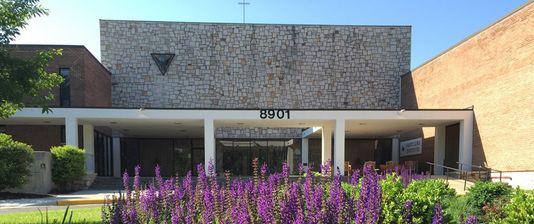|
30 Pa. priests accused of sex abuse sent to center for treatment, but some advice ignored
By Anthony J. Machcinski
[with video] In a nearly 900-page grand jury report on abuse by priests in the Catholic dioceses of Pennsylvania, the name St. Luke’s Institute keeps appearing. It was where Father Joseph Mueller was sent in April 1986 after he tried to pull down the pants of a teenager on multiple occasions, according to the report. The Rev. Richard Terdine, too, was sent there after he allegedly patted the genital area of a boy and massaged his back. In total, at least 30 priests were sent to St. Luke’s Institute, according to the report that goes back decades. The report released Tuesday, which listed the names of 301 priests in six Catholic dioceses accused of child abuse, names psychiatric treatment centers as part of the issue of dealing with problem priests. St. Luke's isn't the only place where priests were sent. Other mentioned treatment centers include St. John Vianney, a church-run facility in Downingtown, Pennsylvania, where at least 17 priests were sent, and Southdown Institute, a psychiatric facility in Canada where several others took sabbaticals. The grand jury drew attention to treatment centers as part of the problem. “(The dioceses) for an appearance of integrity, send priests for ‘evaluation’ at church-run psychiatric treatment centers,” the report states. “(The dioceses) allow these experts to ‘diagnose’ whether the priest was a pedophile, based largely on the priest’s 'self-reports'," and regardless of whether the priest had actually engaged in sexual contact with a child.” Susan Gibbs, a spokeswoman for St. Luke's, disagreed with that statement. "They are actually part of the solution," Gibbs said. "(St. Luke's) provided external information to the diocese so they could make the right steps... By sending people to treatment, you're giving them treatment that will hopefully end the abuse." Sister Dorothy Heiderscheit, CEO of Southland Institute, said they are not a church-run facility, and are lay owned and lay operated. She declined to comment further, citing confidentiality issues, but said that they, "continue to pray for all the victims and the families." St. John Vianney officials could not be reached for comment. What is St. Luke’sThe St. Luke’s Institute website lists it as an “international Catholic education and treatment center dedicated to healthy life and ministry for priests, deacons and men and women religious.” It has several locations, but the priests mentioned in the grand jury report who attended a St. Luke's facility visited the one in Silver Spring, Maryland, just outside of Washington D.C. St. Luke's is a Catholic organization - a distinction that helps the program receive different grants and recognitions - but is a nonprofit organization with a predominantly lay board. The facility opened more than 40 years ago for the treatment of alcohol and substance abuse, but in the mid-1980s, officials at the institute began to notice a trend, that many alcoholics often had sexual or personality issues in addition to their addiction, so St. Luke's began treating broader issues. The institute's website says it now helps with recovery from, “challenges such as anxiety, addiction, depression, substance abuse, boundary concerns, interpersonal problems, sexual issues and trauma.” Diagnosis and recommendationsSince the facility opened in 1977, it has treated more than 10,000 people, with sexual abuse being only a small portion of that, Gibbs said. For all clients, St. Luke's uses a five-day evaluation that includes an "intensive" look into medical, psychological and spiritual evaluations. Following that, the diocese, the client and St. Luke's meet to discuss the findings and a recommendation is made from that. Often, those who are recommended and receive inpatient treatment stay for a six-month period. After that, St. Luke's sends its recommendation on whether the client should return to ministry. In some cases, the evaluation can help create a diagnosis based on the American Psychiatric Association Diagnostic and Statistical Manual of Mental Disorders. When those guidelines can't classify a client under a diagnosis - like pedophilia - they can make additional recommendations that can warn the diocese of questionable behavior. St. Luke's is also a mandated reporter in Maryland - if child abuse is suspected or admitted, it must be reported to civil authorities in Maryland. Cases where the dioceses ignored recommendationsSt. Luke's can make the recommendations, but it's on the diocese and the client to act on it, Gibbs said. While the report said sending priests to treatment centers was a key part of the plan to cover up abuse in the church, on several occasions, reports from St. Luke’s to the dioceses were received, but recommendations for service were ignored, according to diocesan notes from the grand jury report:
The best way to combat sexual abuse is by educating children and parents about the signs of abuse, Gibbs said. It's not just an issue with the Catholic church, it's using the lessons learned in cases like these in everyday life. "Early reporting is one of the most important, most significant steps that we can take as a culture," Gibbs said. "If you report early, you can prevent abuse later." Many of the biggest changes occurred in 2002, after the issue of child abuse and a larger cover-up came to light in Boston. One big change since then was the church telling those reporting to go straight to local authorities, even if it's just suspected abuse. "You don't have to know for sure," Gibbs said. 'It's your job to flag it and let the professionals look into it... if you suspect it, report it because there's a child's life involved there." For those seeking child protection tips, Gibbs pointed to the child protection section of the Archdiocese of Washington, which includes several PDFs on safety tips and child protection training. Contact: amachcinski@ydr.com
|
.
Any original material on these pages is copyright © BishopAccountability.org 2004. Reproduce freely with attribution.
